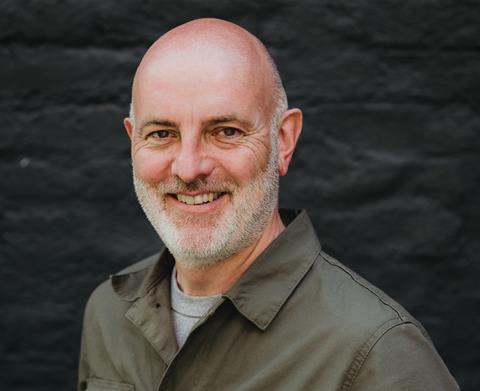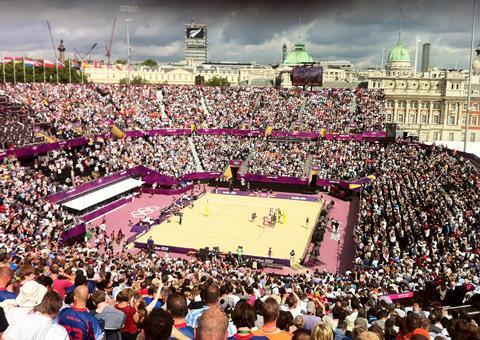Environmental and financial imperatives are driving a new approach to stadium design and sporting events, writes Kevin Owens

Australia and New Zealand are pointing the way to a more sustainable model for major sporting events by hosting the 2023 FIFA Women’s World Cup, using a mixture of existing and newly constructed stadiums. But even as Australia showcases this positive news story, the country is struggling elsewhere with the cost and sustainability issues that still too often afflict these global sporting events.
Just last week, the Australian state of Victoria announced that it can no longer support the next Commonwealth Games (CWG) due to spiralling costs. It’s is the second time within the last CWG cycle that a host nation has stepped back from its opportunity to deliver the Games.
This is a clear indication that the global games model is in need of a rethink, going well beyond the established norms of legacy and sustainability. If the carbon argument wasn’t forcing enough critical thinking from some hosts, the cost clearly will.
It’s a dose of realism – the socio-economic and political factors that shape global sporting events go well beyond the activity on the fields of play, and this is where intelligent design has a key role to play.
The men’s World Cup final held between France and Argentina in Qatar last year was probably the greatest game in the history of the tournament, watched by a global audience of an estimated 1.5 billion. It’s therefore easy to forget that the last men’s World Cup was also the most contentious in the tournament’s 82-year history – socially, environmentally, and architecturally.
How on earth could a country of 3.5m people justify the environmental cost of constructing so many stadiums?
Criticism started almost immediately when Qatar won the bid in 2010. There was the issue of heat, with fixtures subsequently moved to the cooler months of November and December, which meant disrupting domestic football timetables. Then stories emerged of poor working conditions and even deaths on the construction sites.
From an architectural and sustainability perspective, concerns were initially raised around the long-term viability of Qatar’s eight stadiums. We know from previous sporting events around that world that even much larger countries struggle to find viable legacy uses for venues of this scale and capacity.
How on earth could a country of 3.5m people justify the environmental cost of constructing so many stadiums? The tournament benefited from a compact park-like model, more akin to an Olympics, delivering a close knit spectator experience, but at what cost?
Possibly the best thing for the Cup’s legacy and the region, and to save on resources, would have been to co-host with neighbouring countries including Bahrain, Saudi, Abu Dhabi and the UAE – a smaller scale, but similar model to the US 2026 tournament. Such an approach could have enabled the bidding team to use existing infrastructure which would have seen fewer larger capacity stadia built in tiny Qatar.
Time to challenge the norms
From our studio’s experience designing for the Olympics, the first port of call on principles and legacy planning should be with the body accepting and coordinating bids. Setting the brief to deliver higher quality experiences for less, whilst challenging preconceptions around capacities, and embracing technology to realise the most efficient solutions.
It is worth noting that major elements of the Qatar tournament will be demounted, and this should be applauded, but if the premise was to build less from the outset, the benefits would be tangible. Were the tournament capacity targets set too high to make the longer-term legacy truly sustainable or economically viable for future hosts? Can we begin to develop truly location / regional driven tournament plans?
Politics versus sport

The 2012 London delivery was seen as a game changer in building only what was really needed. London challenged the IOC’s requirements and encouraged the use of temporary overlay while scaling back the Olympic programme to suit the city. It’s intriguing that both Beijing and London hosted the same event with the same number of athletes, the same sporting programme, but with London using considerably less. Even in the context of an Olympics, the Mies van der Rohe adage of “less is more” still rings true.
Sadly, however, the lessons learned were then lost because of the way Rio de Janeiro was delivered in 2016. Brazil tried to make a statement with ambition and to be grand, but in doing so turned the clock back to the cumbersome Beijing model.
woo has worked on various major Games bids including both Rome and Boston’s Olympic bids, and we now see a challenging pattern emerging. As with Victoria, we have witnessed too many winning bids withdrawing candidature due to cost concerns. This underlines the need to make major sporting events financially and environmentally sustainable.
We need to talk
An open and transparent transfer of knowledge between host cities past, present and in the future is now critical. Starting with a fully informed brief ultimately enables future hosts to challenge and reassess all preconceptions, only build what has to be built, and only commit to projects that leave a lasting legacy.
Knowledge transfer needs to be collaborative and take place early. Too often pride steps in, and we see an unwillingness from one host to illustrate the mistakes made or vulnerabilities to the other.
Planning ahead
Whether there’s been key learnings from those Games, or there’s been a greater global understanding of cooperation spurred by the pandemic, Paris 2024 and LA 2028, are already communicating about their experiences.
Games and tournaments are now being awarded earlier. Until now, the Games were given seven years in advance, but Brisbane, Australia knows it will be hosting the Olympics in 2032. We now have three Games coming up, where we have the massive opportunity to communicate openly and plan legacies.
A warning, however. Don’t mistake a long lead time with good planning. Qatar had 11 years to prepare but sat on its hands. The winning bid team could have used its extraordinary lead time productively to help develop a more sustainable, holistic and legacy-based tournament that was appropriate for the host nation, rather than the host Federation.
As we grapple with the effects our entertainment takes on resources and people, the cities and countries around the globe taking on the challenge as host must share more. As long as the organisations and sponsors continue to profit, designers need to push for more flexible and collaborative thinking – the stakes are too high not to.
Postscript
Founder at woo architects
















No comments yet